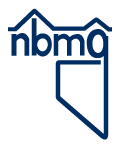GEOTHERM Database
(Download the zip file, 1033KB)
GEOTHERM is an acronym for a U.S. Geological Survey (USGS) computerized information system
designed to maintain data on the geology, geochemistry, and hydrology of geothermal sites
primarily within the United States. The system was first proposed in 1974, and was active until
1983. The system utilized a mainframe computer, and most of the data were entered by use of
key-punch cards. Key punching was done from a rather extensive data-entry form. When the
GEOTHERM database was taken off line, a number of products were published or made available
to preserve the data. These include basic data for thermal springs and wells on a state-by-state
basis and a listing of each record on a state-by-state basis (as microfiche). The GEOTHERM
database was also filed with the National Technical Information Service (NTIS) as digital data.
As part of a study of low-temperature geothermal resources in Nevada (see Open-File Report
94-2), NBMG obtained a 9-track one-half-inch reel-to-reel tape in ASCII format of this NTIS
GEOTHERM database.
Because the database was taken off line in 1983, it does not contain data collected after that date. The tape from NTIS was read on to a large magnetic disk at NBMG. Information supplied by NTIS with this tape gave the field lengths of each field in the database. With this information a database having fixed- length fields was designed and used to read the GEOTHERM ASCII file into that database. The database on tape contained 8,082 records, with 120 fields for each record. Many fields are empty in a number of records. The database software used for this translation was INFO, a subset of the ARC/INFO software utilized in many GIS (Geographic Information Systems) applications. The database in INFO was nearly 19 MB (megabytes). The database was converted, by use of PC ARC/INFO, into a format compatible with modern database-management software (such as dBASE). We used PC-File (a product of ButtonWare, Inc.) as the PC-based database software. The GEOTHERM database in PC-File has several problems that may make it difficult to use. One of the most notable problems is that in the PC-File format (essentially a dBASE (.dbf) format), most of the numerical data (temperature, water chemistry, etc.) are preceded by a five-sided graphic figure which resembles the outline of a small house (or a baseball field "home plate"). This non-ASCII character was apparently a pad character or "punch" symbol in the original database that acted as a space. It cannot be searched for, and remains in the database. In addition, some records had data reported in different units from other records (for example concentrations in ppm or epm); the units used are reported in a separate database field.
GEOTHERM contained 1367 records for Nevada when it was taken off line in 1983; this is the number of Nevada records on the NTIS tape as well. The great majority of these records are from the published sources used to compile Appendix 1 of NBMG Bulletin 91. Unpublished site data and analyses from the files of D.E. White (USGS) make up a significant section of the database also. The longitude and latitude locations of many springs and wells listed in the database were originally determined by plotting them on 1:250,000-scale maps and hand digitization. Thus, accuracy of location data is variable.


 Home
Home